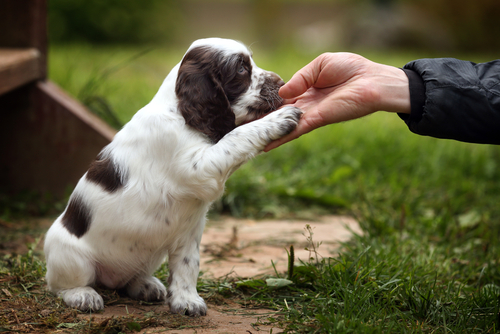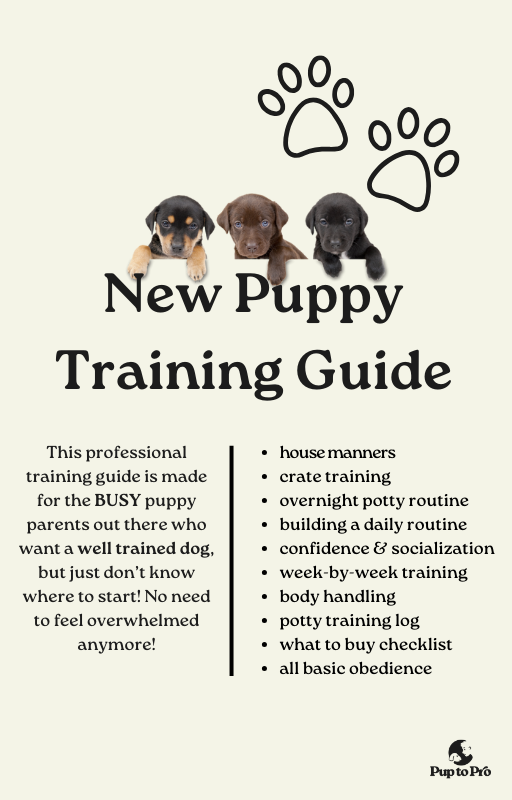Common Mistakes to Avoid in Puppy Training and How to Correct Them
Common Mistakes to Avoid in Puppy Training and How to Correct Them
Blog Article
Top Puppy Training Methods to Make Sure a Mannerly Pet
Effective pup training is crucial for cultivating a well-behaved buddy, and various strategies can substantially affect a canine's advancement. As we discover these techniques further, it comes to be clear that the success of young puppy training hinges on a combination of techniques that can change your pet dog's actions in exceptional means.
Positive Reinforcement Techniques
Using favorable support methods is necessary for efficient pup training, as it motivates desired actions through incentives as opposed to punishment. This method takes advantage of the natural learning processes of dogs, reinforcing good actions by supplying instant and tangible benefits, such as treats, praise, or playtime. By linking positive outcomes with certain actions, puppies are more probable to duplicate those actions in the future.
Incentives need to be given promptly after the wanted habits happens to create a clear link in the young puppy's mind. Furthermore, varying the kinds of benefits can keep a pup's passion and inspiration throughout the training procedure.

Consistency in Training Commands
Maintaining consistency in training commands is crucial for strengthening the lessons learned with positive reinforcement methods. Canines flourish on routine and predictability, so utilizing the very same spoken commands and hand signals for details actions is necessary. This harmony aids pups recognize what is anticipated of them, lowering confusion and stress for both the instructor and the animal.

Timing also plays a substantial duty in consistency. Commands must be delivered promptly throughout training sessions and adhered to right away by favorable reinforcement, such as deals with or praise. This instant action helps solidify the association in between the command and the preferred habits.
Including consistency right into training sessions will create a steady knowing atmosphere, advertising quicker proficiency of commands. Ultimately, a well-structured technique cultivates a strong bond in between the pup and its owner, resulting in a more obedient and mannerly family pet.
Socialization With Various Other Animals
Socializing with other family pets is vital for a young puppy's growth, as it assists them discover proper actions and interaction skills in diverse social contexts. Very early communications with various pets can considerably influence a puppy's character and adaptability in different circumstances. When pups are subjected to a variety of family pets, they end up being a lot more positive and less afraid, which can stop prospective behavioral problems later on in life.

Educate your pup to identify signals from various other pet dogs, such as indications of playfulness or discomfort, promoting mutual respect and understanding. Routine socialization not just boosts your pup's social skills yet likewise contributes to their overall well-being, creating an extra harmonious living setting.
Cage Training Advantages
Identifying the many advantages of dog crate training can significantly improve both the pup's and owner's experience. Crate training gives a safe and secure setting for pups, guaranteeing they feel secured when left alone. This complacency can significantly decrease anxiousness and stress levels for both the proprietor and the family pet.
Additionally, pet crates act as a beneficial house-breaking tool. Pups naturally prevent dirtying their resting location, thereby encouraging them to hold their bladder till they are let outdoors. This impulse can accelerate the house-breaking process, cultivating good practices beforehand.
Crate training likewise aids in handling a puppy's actions when without supervision. By providing a designated space, owners can protect against damaging behaviors, such as eating on furniture or getting involved in harmful materials. Moreover, pet crates can be helpful throughout travel, supplying a familiar space that can aid soothe a young puppy have a peek here in new environments.
Finally, establishing a dog crate regular urges independence, enabling pups to find out how to be alone without concern. Overall, pet crate training is an efficient approach for promoting peace, discipline, and safety, resulting in a well-adjusted, mannerly pet.
Chain Training Essentials
Leash training is an essential aspect of liable pet possession that makes certain a risk-free and delightful strolling experience for both the pup and its proprietor. Appropriate leash training begins early, ideally during the puppy's socialization duration. When out in public., this training assists establish good habits and advertises positive habits.
To start, pick a comfortable collar or harness that fits your young puppy well. Attach a sturdy chain, ensuring it is not too long, as this can result in pulling and erratic behavior. Begin in a peaceful setting to decrease diversions and gradually present your pup to new environments.
Use positive support methods, such as treats and praise, to encourage your puppy to stroll next to you. If your young puppy draws, quit strolling and wait on them to go back to your side prior to proceeding. This instructs them that pulling will certainly not produce onward activity. Consistency is essential; technique frequently and stay client, as mastery requires time.
Furthermore, incorporate short training sessions with fun distractions to click here to read build your pup's emphasis. With dedication and perseverance, leash training will certainly result in a well-mannered friend, making strolls delightful for both the young puppy and the proprietor.
Conclusion
In conclusion, using effective puppy training methods is crucial for developing a well-behaved pet. On the whole, these approaches collectively advertise a harmonious connection between puppies and their proprietors.
As we check out these approaches further, it comes to be clear that the success of puppy training pivots on a combination of techniques that can transform your family pet's habits in exceptional ways.
Using favorable support strategies is vital for efficient young puppy training, as it motivates desired behaviors via rewards rather than penalty.Crate training additionally aids in managing a young puppy's habits when without supervision.Leash training is a fundamental aspect of liable family pet ownership that guarantees a enjoyable and risk-free strolling experience for both the pup and its owner.In verdict, employing efficient pup training techniques is essential for developing a mannerly animal.
Report this page